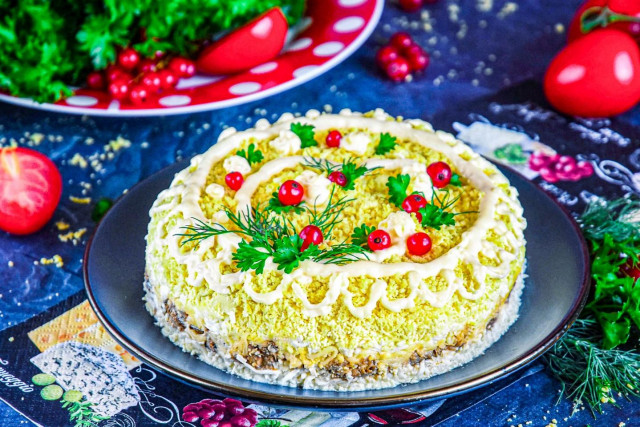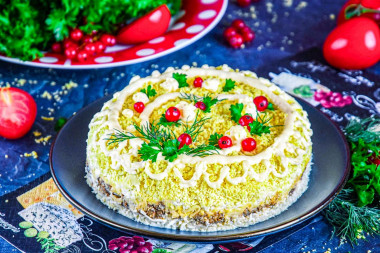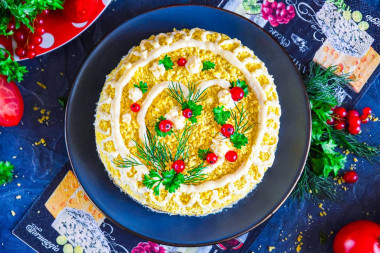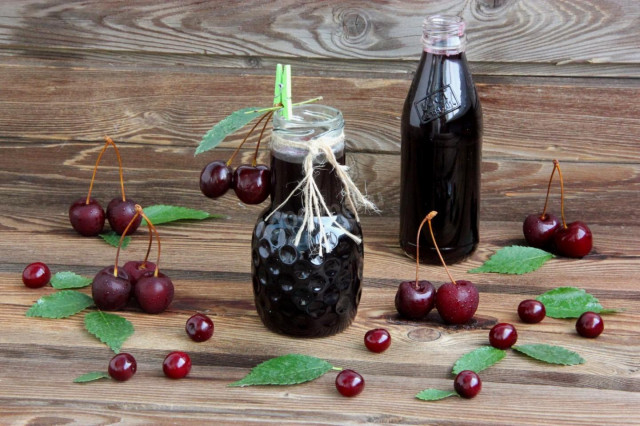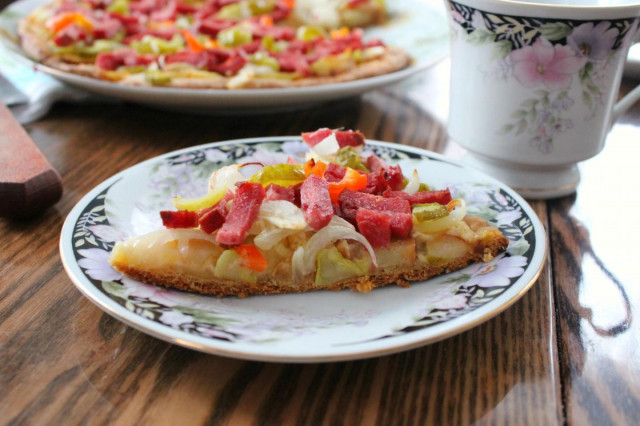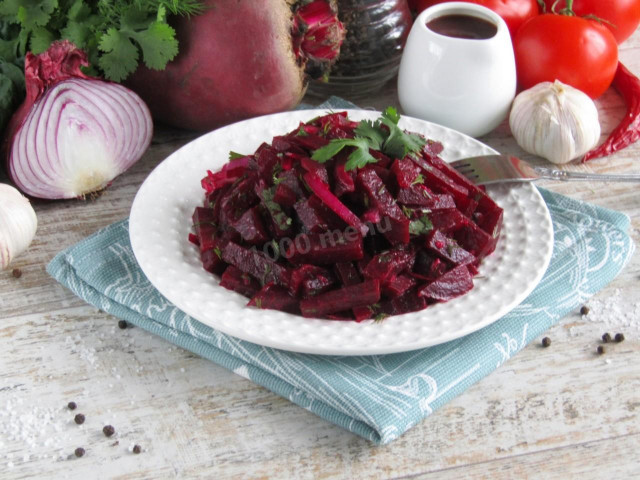Composition / ingredients
Step-by-step cooking
Step 1:
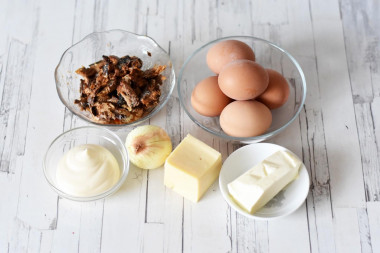
How to make a mimosa salad with butter? This is a very simple version of the well-known salad. First, prepare the necessary ingredients according to the list. Eggs need large, selected. If the eggs are small, take one more. Put the required amount of butter in the freezer beforehand. Instead of saury, you can use other canned fish to taste: sardine, pink salmon, tuna, etc.
Step 2:
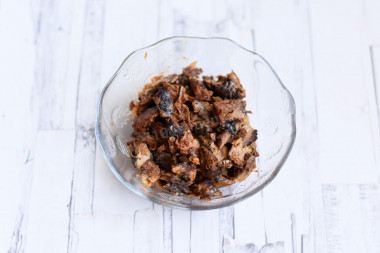
Remove the fish from the jar, shake off the juice and mash it into small pieces with a fork. If you like more fish in the salad, you can take two cans instead of one.
Step 3:
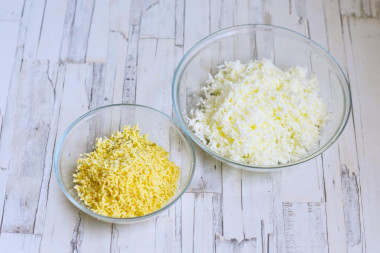
Hard-boil eggs, cool and peel. Divide into whites and yolks and grate separately on a fine grater. The finer the ingredients are rubbed, the tastier and more delicate the salad will turn out.
Step 4:
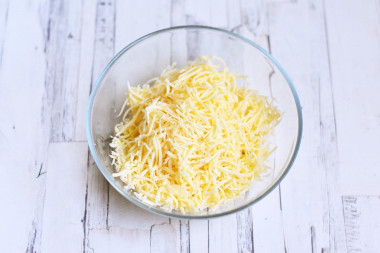
Also grate the cheese on a fine grater. Cheese for this dish is suitable for any — hard, semi-hard. The main thing is that it is tasty, high-quality, without milk fat substitutes and rubbed well.
Step 5:
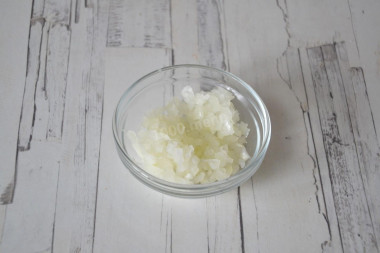
Cut the onion into small cubes. You can not add onions to the salad at all, as it will take over the taste of all the other ingredients and they will simply get lost against its background. You can reduce the sharpness by marinating the onion in vinegar for 5-7 minutes and thereby beating off the bitterness.
Step 6:
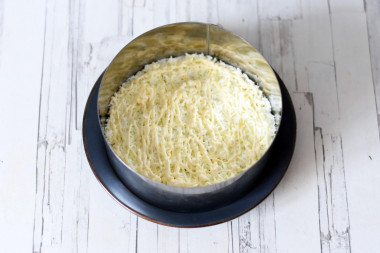
You can form a salad in a salad bowl or in a culinary ring for a more festive serving. Place a ring with a diameter of 16-18 cm on the plate. Put the grated egg whites in the first layer, smooth them out and pour mayonnaise over them. I put the mayonnaise in a pastry bag - it's more convenient this way.
Step 7:
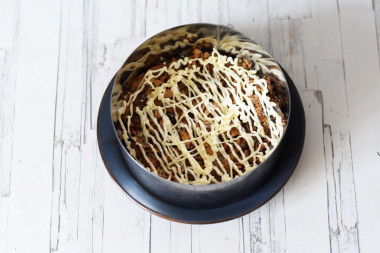
Next, lay out all the canned fish and also pour mayonnaise over it. If you decide to use 2 cans of fish instead of one, then put the second portion in a separate penultimate layer before the yolks.
Step 8:
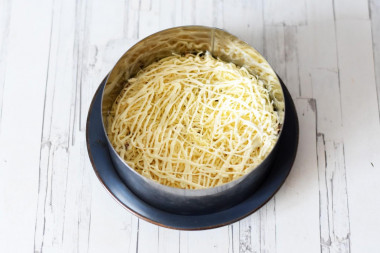
Sprinkle grated cheese on top and also make a mesh of mayonnaise.
Step 9:

Next - chopped onion (optional). On top of the onion, grate cold butter on a fine grater. Why not rub the oil in advance at the stage of preparation of all products? You can, of course, but then you will immediately need to put it in the freezer so that it does not melt by the time the queue reaches it. But it can freeze over and turn into a hard frozen lump, and we need an air structure.
Step 10:
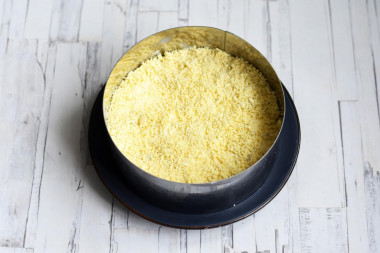
Sprinkle the chopped egg yolk on top of the salad. Put the salad in the refrigerator for 1 hour for impregnation and cooling. So that the top layer does not wind up, tighten the mold with cling film.
Step 11:
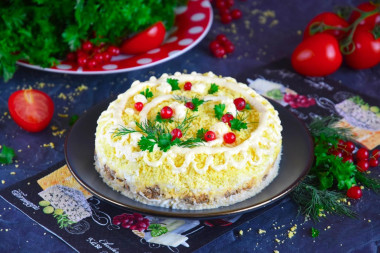
Remove the cooking ring before serving. Decorate the salad as desired. I decorated it with dill, parsley, remnants of mayonnaise and bright berries. Enjoy your meal!
How to cook hard-boiled eggs? So that the eggs do not crack when cooking, put them in cold water and put them to cook on a small fire. Boil the eggs for 9 minutes after boiling, then pour cold water and cool. From a sharp temperature drop, the shell will be better cleaned.
Shake the can before buying. The more liquid there is in it, the smaller the fish.
Since the degree of salinity, sweetness, bitterness, sharpness, acid, burning is individual for everyone, always add spices, spices and seasonings, focusing on your taste! If you put some of the seasonings for the first time, then keep in mind that there are spices that it is especially important not to shift (for example, chili pepper).
Caloric content of the products possible in the composition of the dish
- Onion - 41 kcal/100g
- Chicken egg - 157 kcal/100g
- Egg white - 45 kcal/100g
- Egg powder - 542 kcal/100g
- Egg yolk - 352 kcal/100g
- Ostrich egg - 118 kcal/100g
- Dutch cheese - 352 kcal/100g
- Swiss cheese - 335 kcal/100g
- Russian cheese - 366 kcal/100g
- Kostroma cheese - 345 kcal/100g
- Yaroslavsky cheese - 361 kcal/100g
- Altai cheese 50% fat content - 356 kcal/100g
- Soviet cheese - 400 kcal/100g
- Cheese "steppe" - 362 kcal/100g
- Uglich cheese - 347 kcal/100g
- Poshekhonsky cheese - 350 kcal/100g
- Lambert cheese - 377 kcal/100g
- Appnzeller cheese with 50% fat content - 400 kcal/100g
- Chester cheese with 50% fat content - 363 kcal/100g
- Edamer cheese with 40% fat content - 340 kcal/100g
- Cheese with mushrooms of 50% fat content - 395 kcal/100g
- Emmental cheese with 45% fat content - 420 kcal/100g
- Gouda cheese with 45% fat content - 356 kcal/100g
- Aiadeus cheese - 364 kcal/100g
- Dom blanc cheese (semi-hard) - 360 kcal/100g
- Lo spalmino cheese - 61 kcal/100g
- Cheese "etorki" (sheep, hard) - 401 kcal/100g
- White cheese - 100 kcal/100g
- Fat yellow cheese - 260 kcal/100g
- Altai cheese - 355 kcal/100g
- Kaunas cheese - 355 kcal/100g
- Latvian cheese - 316 kcal/100g
- Limburger cheese - 327 kcal/100g
- Lithuanian cheese - 250 kcal/100g
- Lake cheese - 350 kcal/100g
- Gruyere cheese - 396 kcal/100g
- Butter 82% - 734 kcal/100g
- Amateur unsalted butter - 709 kcal/100g
- Unsalted peasant butter - 661 kcal/100g
- Peasant salted butter - 652 kcal/100g
- Melted butter - 869 kcal/100g
- Salad mayonnaise of 50% fat content - 502 kcal/100g
- Light mayonnaise - 260 kcal/100g
- Provencal Mayonnaise - 624 kcal/100g
- Provencal mayonnaise - 627 kcal/100g
- Table mayonnaise - 627 kcal/100g
- Canned saury - 88 kcal/100g

